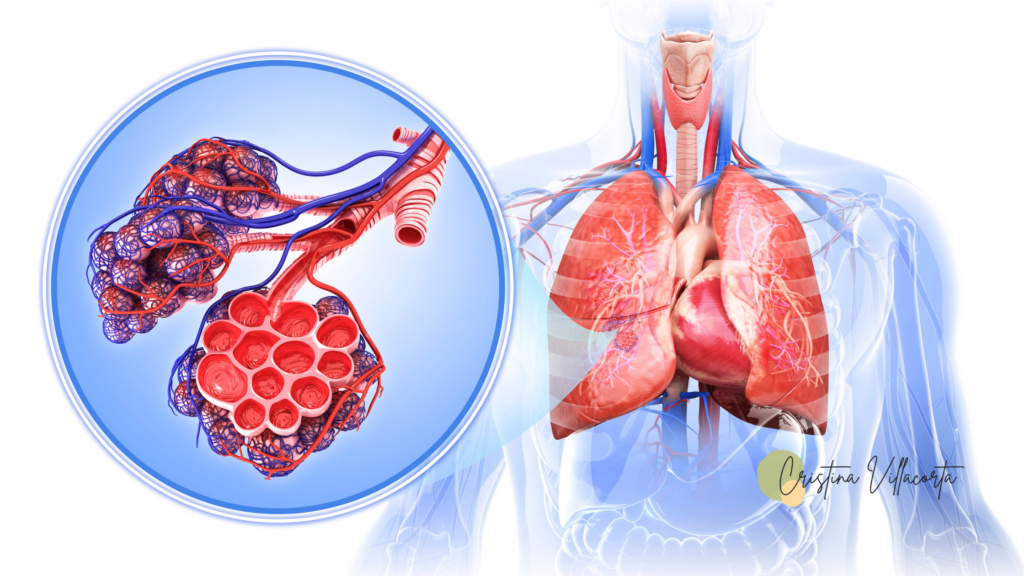Pneumonia is referred to swelling and inflammation of the lungs, and both bacteria or a virus can cause it. In homeopathy, we have several homeopathic remedies to help speed healing and get symptomatic relief for pneumonia.
Kali Carb 200 is part of both Banerji Protocols to help tackle symptoms and strengthen the lungs and is one of the top homeopathic remedies for active pneumonia.
Symptoms can develop suddenly or over a few days, and some of the symptoms include:
-cough ( dry or mucusy)
-feeling breathless or wheezing
-high temperature
-chest pain
-feeling unwell
-faster heartbeat
Working with the Banerji Protocols has allowed me to become confident in treating children or adults with recurrent respiratory issues such as pneumonia. Homeopathy is very helpful for the acute and chronic stages of pneumonia.
Look at these remedies that are helpful for coughs to complement the Banerji Protocols. These remedies can be used alongside for symptom relief.
HOMEOPATHIC REMEDIES FOR PNEUMONIA BANERJI PROTOCOL TIP
For Viral Pneumonia:
- Kali Carb 200 twice daily
- Aconite200+Bryonia30 in alternation with Chelidonium 6x every 3 hours
For Bacterial Pneumonia or if Infection sets in:
- Add Hepar 6c every 3 hours
If there is any wheezing, use Kali Iod 6c as often as needed, and Ipecac 30 is helpful for phlegm and congestion.
If this is a recurrent issue, it is good to add Calcarea Carbonica 1M every two weeks to increase immunity.

Most people know of Chelidonium as liver support, but they do not know another aspect of this remedy. It is also a fantastic remedy for lung congestion, which is why it is part of the protocol for Pneumonia and congestive cough.
But as you know, I work with several approaches to tackle an issue, and when things do not work in the way we expected, we can add or change remedies to aid healing.

OTHER HOMEOPATHIC REMEDIES FOR PNEUMONIA
FIRST STAGE
BRYONIA 200, 1M
Bryonia is one of the homeopathic remedies most often indicated in early stages of pneumonia. It follows well after Aconite, as it is complementary to when a cold has settled into the chest and there is inflammation of the serous membranes.
The pain is quite severe and feels like bursting; there may be a heavy sore feeling on the chest. You may also experience sharp stitches on the chest or right scapula.
At this stage, respiration may be difficult, worse when breathing in.
At this stage the cough is dry, hard and very painful and when coughing, often you will find yourself holding the chest with your hands- as if the chest needs to be supported- and there is a sensation of fullness in the chest.
Although the cough is dry, there can also be expectoration of rust colour ( blood tinged)
You may find that the cough starts when going into a warm room.
You may find that your chest muscles are very sore from the severe coughing and you may experience intercostal stitching pain.
This is the first remedy for the very early stages of pneumonia or bronchitis and you can use it every 2-3 hours for the first few days. You may need to move on to other remedies below if the symptoms change.
CRISTINA’S TIP
If you are unsure, you can use
- Aconite200+Bryonia 200 that works well complementing eachother action.

SECOND STAGE
ANTIMONIUM TARTARICUM 30C, 200
This is another good remedy for a very congested chest, feeling full but not being able to raise any phlegm.
The chest is full of mucus and rattling sounds with cough or with breathing, and as a result, there is a lack of oxygenation to the tissue.
This remedy is for well-established chesty coughs. It is not a remedy that you will think of at the beginning of a cold. You will use this more towards the end when the person can not clear the amount of mucus and is pooling in the bronchi making it more prone to developing bacterial infections. This is a good remedy for chest infections in conjunction with other remedies.
Ant tart is the chronic counterpart of IPECAC. So if your wet cough has now gone deeper, think of ANT TART.
This is not a remedy for the first stages of pneumonia, for the inflammatory stages, but rather more for the later stages of congestion and exudation. In the first stages, Ipecac 30 is very helpful for chest congestion and phlegm.
So, for instance, your child has a chesty cough with lots of phlegm, and Ipecac is really helping. But after 3-4 days, the cough starts to change to a much heavier cough, and you can hear it rattle on the chest. The child complains that his chest is tight ( and NO, THIS IS NOT AN AGGRAVATION OF THE IPECAC), then you can think of the chronic counterpart of Ipecac, Ant-tart, to help with those changing symptoms.
PHOSPHORUS 30,200
This is one of the most helpful homeopathic remedies often indicated during the second stage of pneumonia when it has progress deeper.
Phosphorus is a very good remedy for chest congestion and pneumonia, especially in the left lower lobe. As a consequence, it feels worse lying on the left side. But you do not need to discard this remedy if the pneumonia is located in another area! This is a good general remedy for chest congestion regarding the side affected.
You may have a general sensation of chest oppression and tightness around that area, and you may experience a sense of heat inside of your chest or lungs. As a consequence, you can experience tight suffocative breathing.
With your cough episodes, you may bring up expectoration that is red or rusty coloured.
The cough is loose, tickling and exhausting and it is often initiated when talking or laughing. You may find yourself wheezing.
This is also a good remedy if you are told in the ER that you have hepatization of the lung after pneumonia.
This is why this remedy is helpful for Pneumonia:
Phosphorus-specific affinities that match this pathology:
-cavities-lungs
-circulation -blood, blood vessels and arteries
-mucous membranes-lungs
Pneumonia produces inflammation and fluid in the alveoli, making breathing hard. The alveoli are small sacks where oxygen is exchanged in the lungs, and that exchange is done through a network of capillaries that surround the alveoli and is transported through the blood around the body.
Remember that homeopathy works on mirroring an image; although the remedies cannot produce any disease, they can match the energetic imprint of a process that looks alike. Hence, the affinities of Phosphorus make it very helpful in ailments of the lungs with congestion, such as Pneumonia.
DOSING OF THOSE REMEDIES
You can use any of these remedies at any stage or alongside any medication you have been prescribed. They will aid healing and speed recovery and will not interfere with any medication your medical doctor prescribes.
If using the Banerji Protocols, stick to the potency and frequency suggested.
If you are using the other remedies, my advice is to use the remedies every 2-3 hours and then, as symptoms improve, decrease to 3 times per day and then twice daily until gone.
My experience suggests that you will need to add remedies for symptom relief alongside the main remedies. Pneumonia can be challenging for self-prescribing as it can move quickly from one stage to the next.
LEARNING ABOUT ACUTE AND CHRONIC RELATIONSHIPS IN CASES AND COMPLEMENTARY REMEDIES
If you have read several of my blogs, you would have heard me talking about remedy relationships, complementary remedies or, particularly, ACUTE-CHRONICS.
The first point of learning about them is in your Materia Medica on the bottom bit, where you will read Remedy Relations, and you will see complementary and follow well. For instance, in Allen Key Notes, you will see -Aconite is the Acute Sulphur- and both precedes and follow it in acute inflammatory conditions.
However, other Acute-Chronic relations are not found in textbooks but through clinical experience in practice. Many are learned from clinical experience and not found in books. Not all of them are recorded!
The term ACUTE-CHRONIC has been thrown around through our homoeopathic training mechanically, and this is how we have just gotten by on those days. But through the years, these are my observations into Acute, Chronic or complementary remedies are:
- ACUTE AND CHRONIC REMEDIES help us understand predictable movement patterns in a case. We can see them in action on a daily basis in your patients.
- ACUTE REMEDIES tend to cover the intense part of the beginning of the condition. These remedies preceded the next stage of the case.
- CHRONIC REMEDIES tend to cover the progression of that illness in the second stage. They hold a complementary action to the acute remedies.
- ACUTE REMEDIES tend to have quick and intense symptoms. For instance, a chesty cough or acute grief. -CHRONIC REMEDIES tend to cover more pathology than acute ones ( although not always the case! Lachesis is an acute of Lycopodium, and Lachesis is a deep remedy with deep pathology).
- CHRONIC REMEDIES tend to correct recurring or continued patterns.
And you may be thinking, how can this help me to choose remedies? Let me show you.
Acute and chronic or complementary remedies are remedies that follow each other well and follow each other in a case. Look at the example of BRYONIA AND KALI CARB above.
Here, Kali Carb is the main acting medicine, and Bryonia is the symptomatic relief. Kali carb is used to reinforce lung immunity, and Bryonia is found in many respiratory protocols mixed with other remedies to alleviate symptoms often.
Bryonia is an acute of Kali Carb.
Can you see the natural progression of those remedies?
So, think that if you are caring for someone with an acute cough that has changed into a different one with new symptoms, this means that you will probably need remedies that follow the progression of those changes, and the best place is to look for remedies that follow each other well!
You can learn about Remedy Relations on your Materia Medica or in a bit more depth on my Dosing Mastery Course Module 4! Learn how remedies are related and how to understand the transition of one remedy into the next in terms of pathology.






